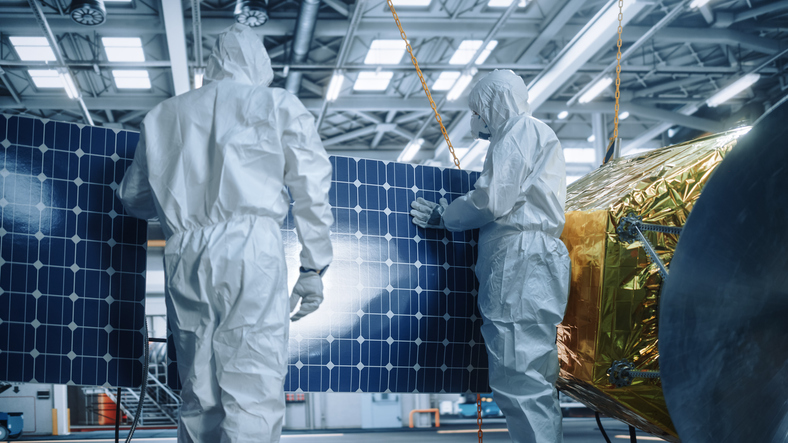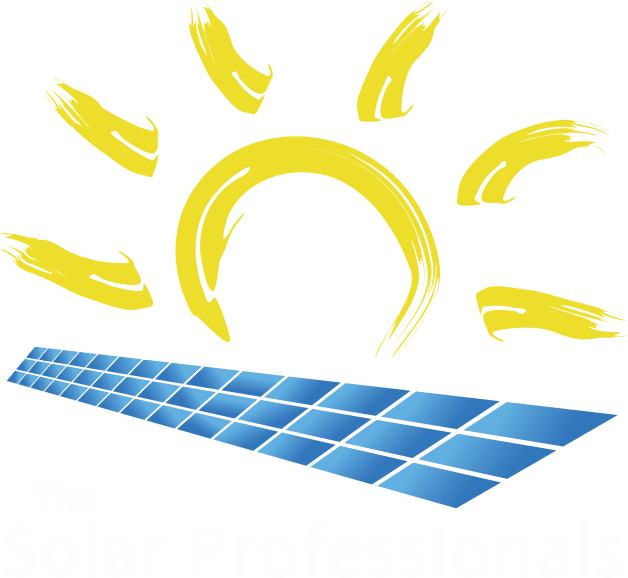You recognize solar panels as black or blue rectangles that attach to roofs and soak up solar energy to power homes. The process of manufacturing solar panels is equally as complex as the technology behind how these panels obtain and use solar energy. The main components of solar panels are solar cells, silicon, metal, EVA film, and glass. The combination of these materials is compiled together to form a panel that creates renewable energy. This article will discuss where solar panels are made, the components of solar panels, the phases of manufacturing, and common misconceptions and facts about popular solar panel manufacturers.
Where are Solar Panels Made?
Most of the work for solar panels is done by precision-level robots in factories in China, the United States, and Canada. Some of the most well-known companies that manufacture panels are LG Solar, CertainTeed, Q Cells, Silfab Solar, Solaria, Tesla, and Hanwha Q-Cell.
The differences in panel brands from a performance standpoint are minimal, but how and where those panels are made can truly make a difference in your ownership experience. This is one of the most important things a solar consultant can provide you with guidance on.
Components of Solar Panels
In order to understand how solar panels are made, we must first explain the key components of a solar panel. The several distinct layers of a solar panel, in order, include:
- An aluminum frame
- A sheet of tempered glass
- A layer of EVA film (highly transparent plastic)
- Solar cells
- Another EVA film layer
- A back sheet
- A junction box
Each layer of the panel plays a vital role in protecting the solar cells from debris, moisture, impact, and high-speed winds. The specific combination of components allows solar panels to capture light and produce energy at maximum efficiency. Over the last 60 years, this unique layering technique has been perfected and allows solar panels to efficiently harness solar energy for over 25 years.
Phases of Manufacturing Solar Panels
Now that we have discussed the distinct layers of a solar panel, it will be easier to get a picture of how the components are compiled. We will simplify the complex solar panel manufacturing process into 6 phases.
Phase 1: Sand to Silicon
The manufacturing process always starts with raw material, and in this case, it’s sand. Most panels are made of silicon which is the main component in natural beach sand. Silicon is the second most abundant element on earth but converting sand to high-grade silicon comes at a cost. By exposing the sand to very high temperatures in an arc furnace, the impurities are burned away, and large, high-purity silicon rocks are left exposed.
Phase 2: Silicon to Ingots
Manufacturers melt down the silicon rocks in a cylindrical furnace, aligning silicon atoms in the desired orientation and structure. Boron is added to the melted silicon to give a positive electrical polarity. This process breaks down the silicon rocks into ingots.
Phase 3: Ingots to Wafers
Once the silicon is formed into cylinder ingots, wire saws are used to cut the cylinders into paper-thin wafers or disks. In order to reduce reflection and maximize sunlight absorption, each wafer is covered in an anti-reflective coating.
Phase 4: Wafers to Solar Cells
Gridded metal conductors are added to the surface of each wafer, which ensures the conversion of solar energy into electricity. These new solar cells are placed in a chamber where phosphorus is diffused in a thin layer over the solar cells. The phosphorus layer gives the surface of each cell the ability to carry a negative electrical orientation This makes a positive-negative connection between the surface and the contents of the cell.
Phase 5: Solar Cells to Solar Panels
The solar cells are linked by soldering a metal connector between each cell, forming 48, 60, or 72 cell panels. The panels then receive their protective layering of a back sheet, EVA film, tempered glass, and an aluminum frame. The junction box is added to connect the panel to the module.
Phase 6: Factory to Consumer
Before shipping, each panel is tested and inspected to ensure that they perform as expected. Once passed, the solar panels are cleaned and shipped out to homeowners across the world.
Common Misconceptions and Quick Facts About Popular Solar Panel Brands
Although Tesla is a well-known brand, they don’t actually manufacture solar panels. Tesla has had a long-standing relationship with Panasonic to manufacture panels and battery cells at giga-factories (giant manufacturing facilities around the world that can mass produce cars, Powerwall battery units, and solar panels). In the solar industry, they have done this largely through a series of contractual relationships. Each year, they pull away from Panasonic as a manufacturing partner so no solar panels are currently being produced at any Tesla factories. However, they offer industry standard brands like Hanwha solar modules in most of their installed systems. It is interesting to note that Tesla purchased a battery company several years ago, which is what accelerated their retreat from Panasonic and that is the main catalyst behind the lack of internal manufacturing.
Additionally, it is interesting to note that while Panasonic and LG are well-known brands, they are no longer going to be offering solar panels to the world. Both behemoths of the solar industry found themselves entangled in international trade law issues and announced in early 2022 that they would stop manufacturing panels at the end of this year. It’s important to have a Solar Professional advise you in your purchase to ensure that you are getting high-quality, long-term, sustainably made solar panels.
The many articles available online that rank solar panels and discuss the “best” solar panels are very biased. They are often written by a company selling those specific panels, written by/for a company manufacturing a specific panel, or based on gross sales around the world. All those metrics are concerning while making a purchase decision yourself. A Solar Professional can help explain why the equipment they’ve chosen is the best balance of value and quality for your project!
Contact The Solar Professionals today for all of your solar needs. One of our trained specialists is always happy to help! Call us at 321-234-4919.
Works Cited:
https://www.solarreviews.com/blog/how-are-solar-panels-made
https://www.solar.com/learn/how-are-solar-panels-manufactured/
https://blueravensolar.com/blog/how-solar-panels-are-made/
https://www.greenmatch.co.uk/blog/2014/12/how-are-solar-panels-made
https://news.energysage.com/best-solar-panel-manufacturers-usa/





